Always clean moss before adding it to your terrarium. You will need a strainer, a container with distilled water, and your moss. Soak the moss in the water, then squeeze and stir them around. Use the strainer to rinse the moss out well. Lastly, store the moss for several days before adding it to the terrarium.
Cleaning and preparing moss before adding it to your terrarium is essential!
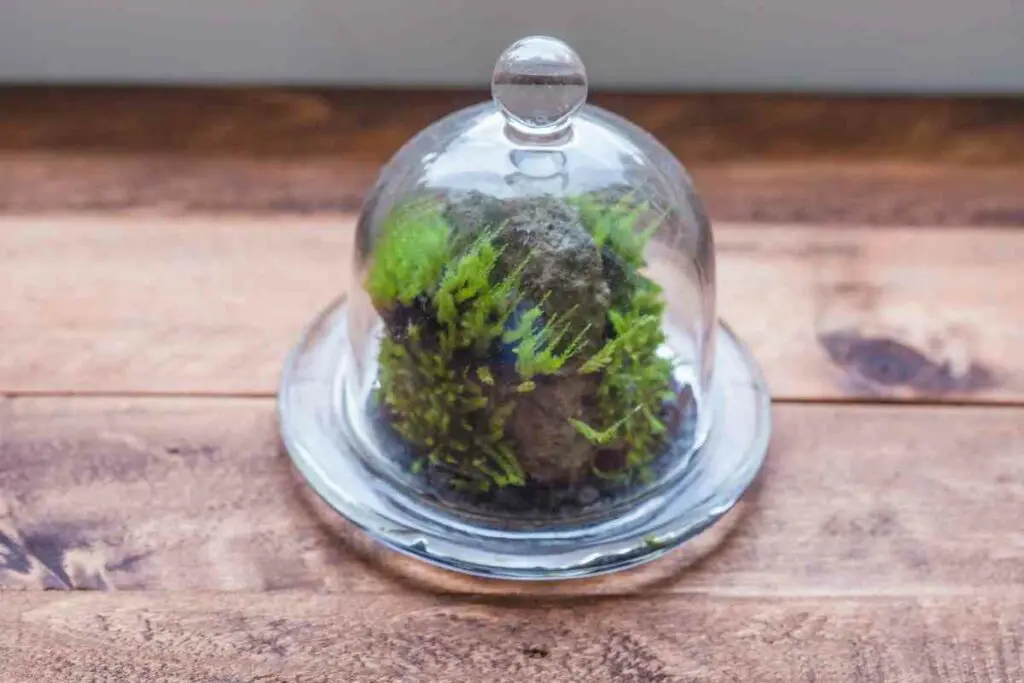
You don’t know what bacteria, parasites, and debris are in the moss.
It’s best to clean it first, so you don’t have to deal with issues later.
Table of Contents
How Do I Clean Moss For a Terrarium?
Cleaning moss for your terrarium is easy! You will need the following:
- A mesh strainer
- A container
- Distilled water
- Access to a sink
- Moss
You can clean more than one piece of moss at a time, so you should do it in large batches if you have a lot.
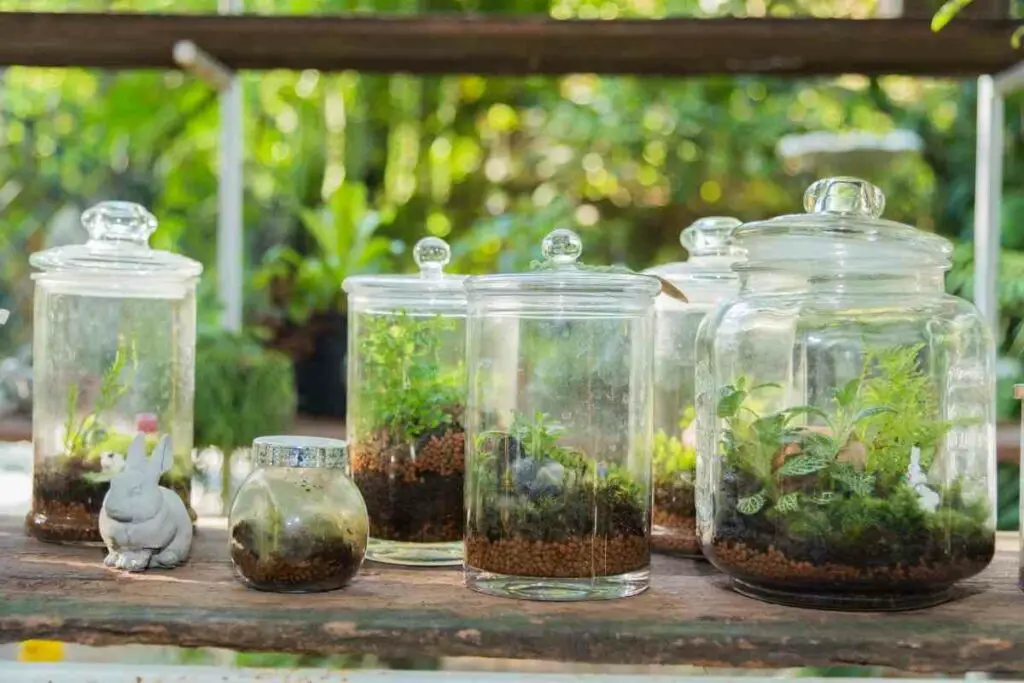
Here is the process:
- Start by pouring the distilled water into the container and adding all of your moss pieces.
- Squeeze them under the water, taking time to swirl them around. You want to clean off as much dirt and debris as possible.
- It’s fine if your moss comes apart since it will grow more in your terrarium.
- Keep swirling and squeezing the moss until all of the dirt comes off.
- Next, place all of the pieces into your mesh strainer.
- Bring the strainer with the moss to your sink.
- Rinse the moss with water until it comes out clean.
- You’ll want to make sure that you get the sides of the pieces well- the longer you can spray them, the better.
How Do I Store Moss For My Terrarium?
Once you’ve cleaned the moss thoroughly, you’ll want to store it.
You should store the plant for several days before adding it to a terrarium. If there were any hidden pests that you missed, they would die at that time.
To store the moss, you’ll want to use a Ziploc bag.
Separate the different moss species into multiple bags and make sure to seal them with a slight gap for airflow.
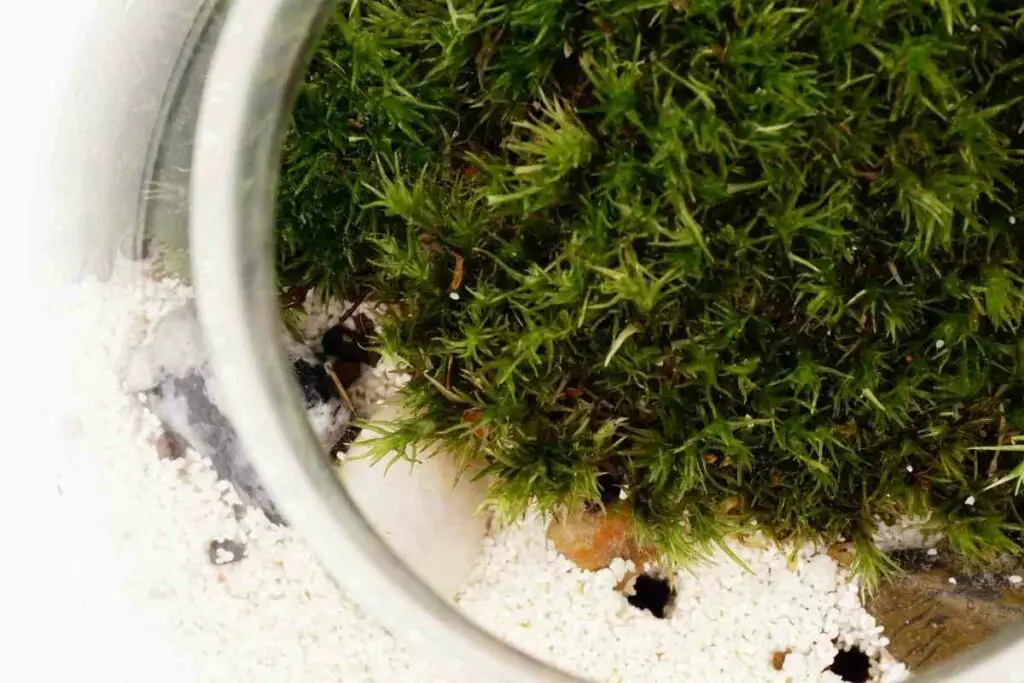
You can write the names of the moss and the date you stored it on the label.
You’ll need to keep the moss in a cool place, where it still has access to some sunshine.
It’s also okay if there’s some moisture in the Ziplock bag, although you won’t want the moss to be soaked!
Overall – You’ll need to store it in an airtight container. Many people choose Ziplock bags, although anything you already have at home will work just as well.
How Long To Quarantine Moss?
You must wait before adding the moss to your terrarium!
If you don’t, you could introduce pests and other problems.
You’ll want to wait at least a week before planting your new moss samples in the terrarium. However, if you can wait longer, that’s better.
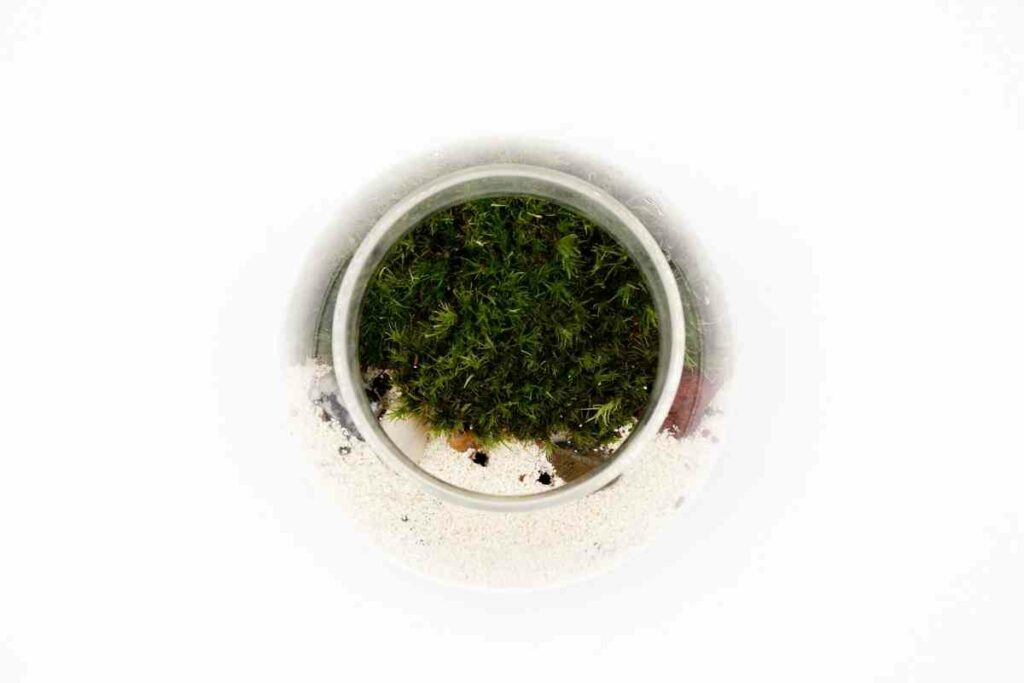
Check on the moss every day during its quarantine.
If you notice insects or mold, you’ll want to throw it out.
You may also see other plants starting to grow in the bag. You can remove these plants most of the time.
If you plan on quarantining the moss for more than a week, you’ll want to water it, so it doesn’t die.
To do this:
- Fill a small spray bottle with distilled water.
- Then, lightly spritz the moss inside of the bag.
You don’t want to drench the moss! Usually, one or two sprays are more than enough.
Why Should I Quarantine Moss?
You should always quarantine moss before planting it in a terrarium.
Otherwise, you risk introducing bugs, diseases, or mold to the environment you’ve created.
These factors can quickly lead to issues, including killing the other plants in the terrarium.
Quarantining the moss in its own container gives you time to observe it.
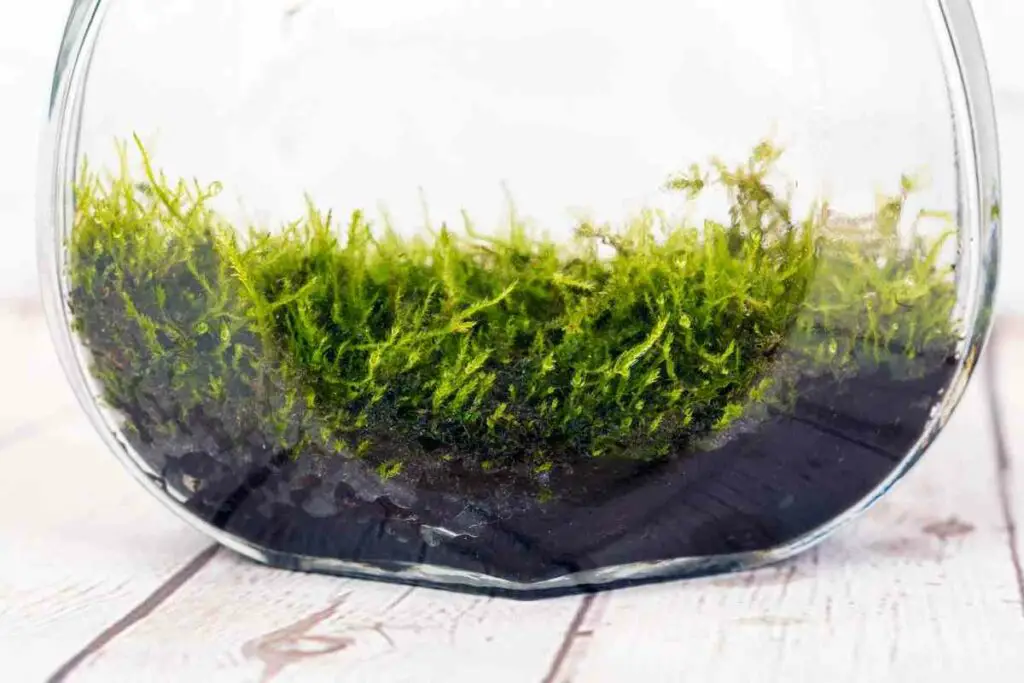
That way, you know you aren’t adding any hitchhikers to your display!
Key Takeaway – Quarantining the moss that you found outside prevents it from bringing pests and mold into the terrarium. You’ll want to make this a habit for all the plants you add to your tank!
What Happens If I Don’t Clean My Moss First?
Not cleaning your moss first can easily ruin your terrarium in just a few days!
It won’t take long for pests to take over the entire setting.
Some bugs that can live in moss include:
- aphids
- fungus gnats
- mealybugs
- springtails
- mites
- and worms
Since you don’t want to bring a bunch of bugs into your home, you need to clean the moss first!
Not all insects will help your terrarium plants thrive either.
Finally – Clean moss looks a lot nicer in a terrarium setting. You should clean the plant to remove debris, such as sticks or bark pieces.
Can I Put Moss From My Yard in a Terrarium?
You can take moss from outside and use it in your terrarium- as long as you clean and quarantine it for several days first.
You should never take outdoor moss, then immediately place it in your tank.
Moss that you find outside is perfect for terrariums!
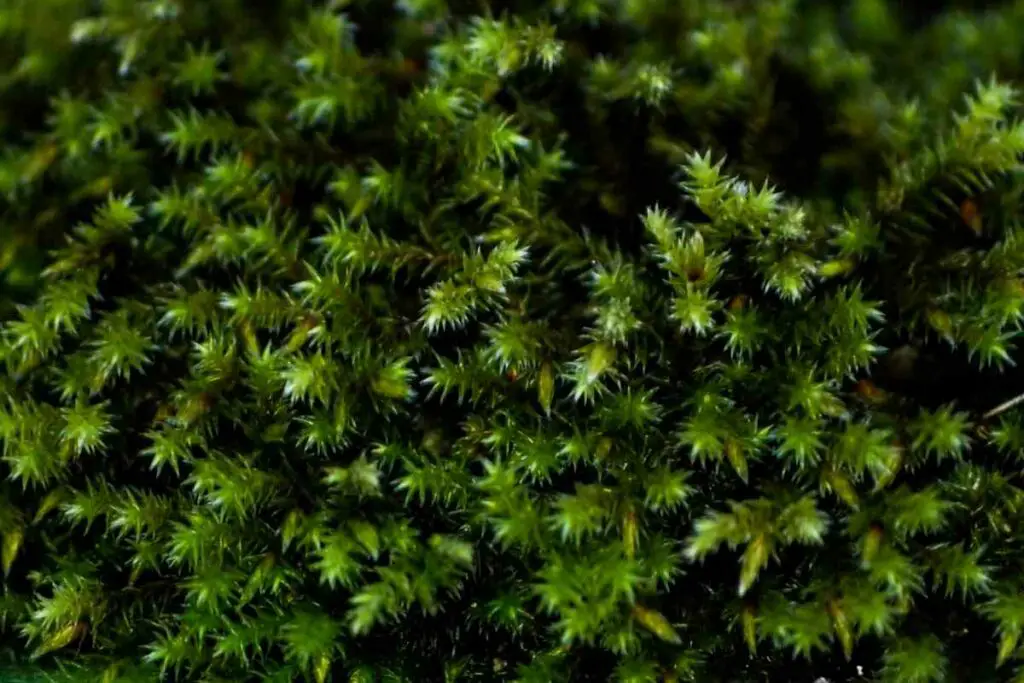
It’s easy to plant, doesn’t take up a lot of space, and is very low maintenance. Most also can grow over many surfaces, including wood and rocks.
When adding moss to a terrarium, you need to make sure that it has the best conditions to grow.
Mist the most with a spray bottle often and use an enclosed terrarium. That way, the moss won’t dry out.
Many different moss types can grow in your yard.
You’ll want to identify them after washing them.
From Experience – The best species to add to a terrarium would be the Dicranum, or mood moss. This moss is very common, so you’re likely to find it in the woods.
In short, you can easily take moss from your yard and use it in a terrarium!
You’ll want to only remove small sections of moss from your yard at a time.
That way, it grows back, and you can have more moss later on. It won’t come back if you take all of it away at once.
Final Thoughts
Things you will need:
- A mesh strainer
- A container
- Distilled water
- Access to a sink
- Moss
Follow our step-by-step guide above for more details.
Not cleaning your moss first can easily ruin your terrarium in just a few days and can attract bugs.
Read Next
- How to Dry Basil Leaves: A Professional Guide
- Is an Avocado a Fruit or Vegetable? Simple Answer and Explanation
- Does Pineapple Have Seeds? Exploring the Anatomy of Pineapples
- Blooming Through Winter: Can I Grow Vegetables Indoors in the Winter?
- What Can You Grow in a Greenhouse All Year Round: A Guide to Year-Round Greenhouse Gardening
- Are Blueberries Blue? Debunking the Myth of Their Color
















